brain
Latest

AI could study your brain to help teachers improve their courses
Teachers don't always know how well their methods work. They can ask questions and hand out tests, of course, but it's not always clear who's at fault if the message doesn't get through. AI might do the trick before long, though. Dartmouth College researchers have produced a machine learning algorithm that measures activity across your brain to determine how well you understand a given concept.

Playing ‘Pokémon’ as a kid may have rewired your brain
If you played Pokémon video games extensively as a kid, there's a good chance that a specific region of your brain gets fired up when you see the characters now. In a recent study, researchers from Stanford University showed test subjects hundreds of Pokémon characters. As you might expect, the brains of longtime Pokémon fans responded more than those unfamiliar with the game. But what's more surprising is that, in all of the fans, a specific brain fold responded, an area just behind the ears, called the occipitotemporal sulcus.

Implant turns brain signals into synthesized speech
People with neurological conditions who lose the ability to speak can still send the brain signals used for speech (such as the lips, jaw and larynx), and UCSF researchers might just use that knowledge to bring voices back. They've crafted a brain machine interface that can turn those brain signals into mostly recognizable speech. Instead of trying to read thoughts, the machine learning technology picks up on individual nerve commands and translates those to a virtual vocal tract that approximates the intended output.

NASA activated Curiosity's second 'brain' after it misbehaved
Tired? Sluggish? Wouldn't it be great if you could just switch your brain to a better functioning version? Well, that's a privilege you can enjoy if you're the Mars Curiosity rover. NASA's intrepid explorer has been subject to a few technical problems over the last two weeks, which means it's been struggling to send its data back to Earth, so engineers have decided to activate Curiosity's second brain.
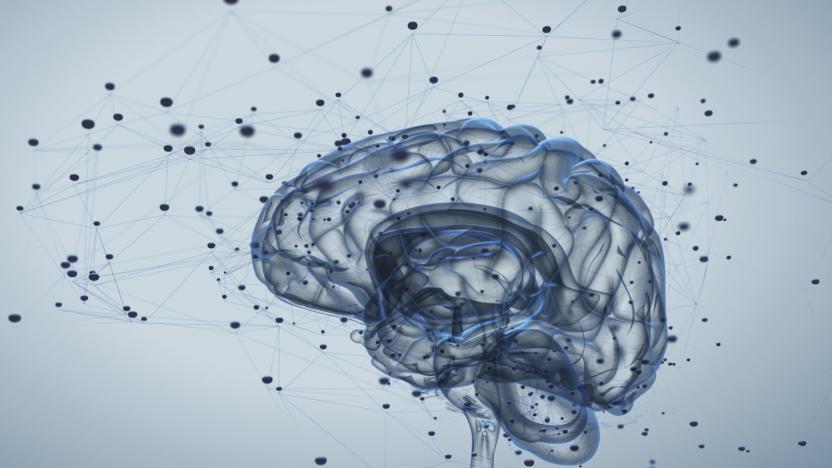
Brain-to-brain network allows three people to share their thoughts
There have been experiments in direct brain-to-brain communication before, but that's now extending to full-fledged networks. Researchers have developed a three-person brain network that lets participants send thoughts to each other -- in this case, to play a Tetris-style game. It used familiar technology, but in a much more scalable format.

Electronic implant helps paralyzed people walk again
People paralyzed because of spinal cord injuries could one day be able to walk again, thanks to an implant that helps send "lost signals" from the brain to leg muscles. In Nature Medicine and the New England Journal of Medicine, research teams report that several patients -- all paralyzed from the waist down -- have been able to walk again after having the electrical patch fitted to their spinal cords. The approach is called epidural stimulation.

Study backs blood test that gauges seriousness of concussions
Remember how the FDA approved a blood test that could determine the severity of a concussion? It's now clear just why the FDA gave its approval. The Lancet Neurology has published the study at the heart of the decision, giving you a chance to verify the claims for yourself (if you're willing to pay, at least). As before, Banyan Biomarkers' test checks for the presence of two brain proteins (GFAP and UCH-L1) whose levels rise when there are signs of internal trauma. The FDA's claims check out -- out of 1,959 eligible test subjects, just three had CT scans turn up results when the blood tests were negative.
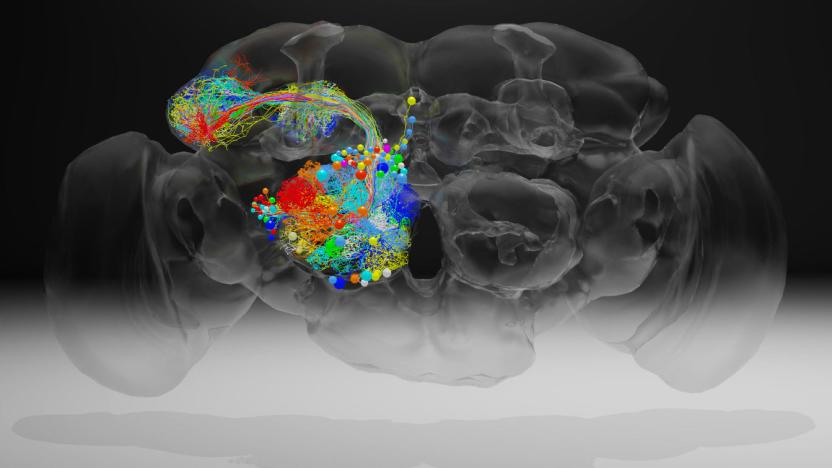
Researchers capture high-resolution image of a complete fruit fly brain
Scientists have created a high-resolution image of a fruit fly brain that will let researchers trace the connections of neurons throughout the brain. A team at the Howard Hughes Medical Institute's Janelia Research Campus led the work, which was recently published in Cell. Davi Bock, the lead researcher on the project, said in a statement that this level of resolution hasn't been achieved before and it will allow scientists to better understand which neurons play a role in behaviors exhibited by fruit flies.

HPE supercomputer will help simulate mammalian brains
Scientists are about to get a serious assist in their quest to simulate brains. HPE has deployed Blue Brain 5, a supercomputer dedicated to simulations and reconstructions of mammalian brains as part of the École Polytechnique Fédérale de Lausanne's Blue Brain Project. The system is based on HPE's existing SGI 8600 (above) and packs a hefty 372 compute nodes between its Xeon Gold, Xeon Phi and Tesla V100 processors, not to mention a whopping 94TB of memory. More importantly, it's flexible -- Blue Brain 5 has four configurations to prioritize different computing tasks, and it can host subsystems geared toward relevant tasks (including deep learning and visualization) while operating as a cohesive whole.
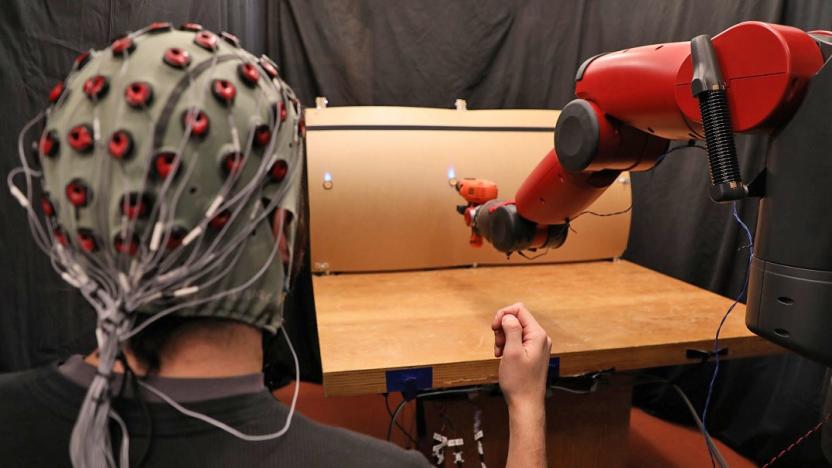
MIT uses brain signals and hand gestures to control robots
Robotic technology has a staggering range of applications, but getting it to perform adequately can be a challenge, requiring specific programming based around the way humans communicate with language. But now, researchers from MIT have developed a way to control robots more intuitively, using hand gestures and brainwaves.
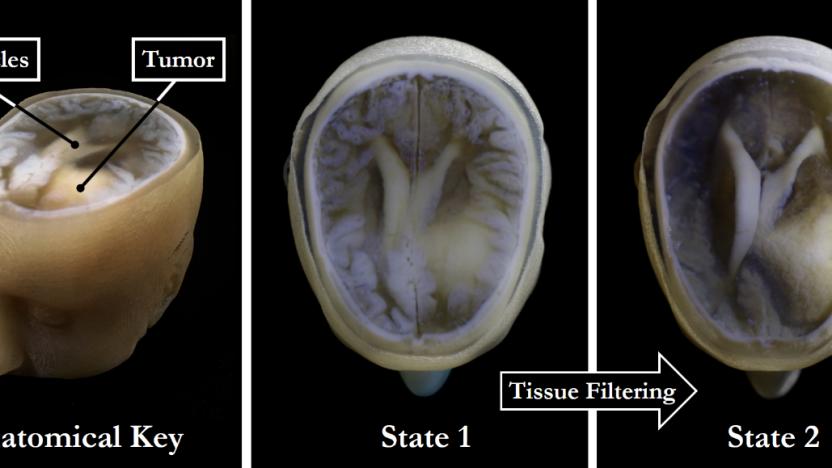
You'll soon be able to get a 3D printed model of your brain
There are almost limitless possibilities when it comes to 3D printing. Design your own color-changing jewelry? Fine. Fabricate your own drugs? No problem. Print an entire house in under 24 hours? Sure! Now, researchers have come up with a fast and easy way to print palm-sized models of individual human brains, presumably in a bid to advance scientific endeavours, but also because, well, that's pretty neat.

How the brain vibrates may determine the severity of a concussion
Researchers may have uncovered some really useful information about what goes on in the brain during a concussion. Getting that kind of information is pretty difficult since it's not exactly practical to image a brain while sustaining an injury and not exactly ethical to introduce an injury to a living person for the purpose of study. But with the help of some computer modeling and head impact data collected from special mouthguards worn by football players, the researchers found that injury is more likely to occur when separate parts of the brain vibrate at different frequencies.
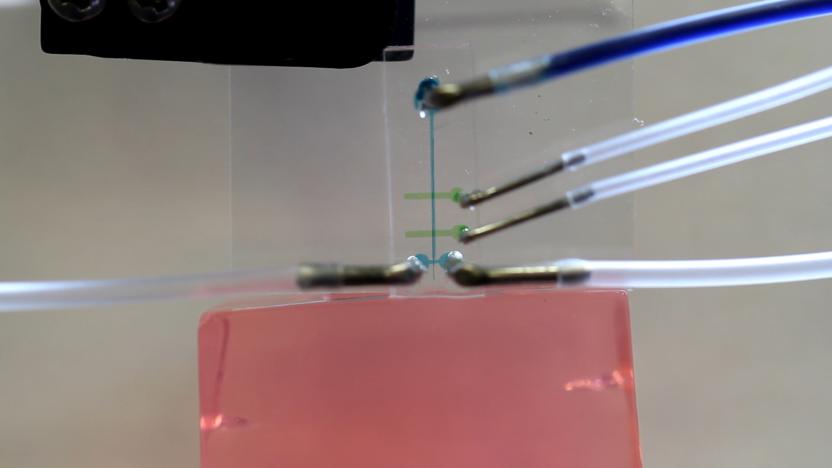
Researchers create less invasive method for placing brain electrodes
Our neurons are firing all the time, receiving signals from other neurons and sending signals of their own. To get a better understanding of how the brain works, scientists often listen in to those signals to see what kind of messages certain neurons send and how often they send them. Doing that often requires researchers to implant an electrode into the brain, which when it's close enough to a neuron, can pick up on the electrical signals that propagate through the neuron. However, getting an electrode into the brain isn't so easy. They either have to be rigid enough to penetrate the brain and remain straight or be inserted through needles that can keep them straight until they're safely in place. The problem is those rigid structures cause damage as they move through the brain and minimizing that damage is a goal that scientists are constantly working towards.

An algorithm could identify suicidal feelings based on brain scans
It's difficult to identify whether or not someone is feeling suicidal by asking. According to studies, roughly 80 percent of those who go through with the act denied feeling suicidal the last time they spoke to a mental health care expert. However, AI-related technology -- which is also being applied to things like spotting cancerous cells -- might offer a way to identify these thoughts and prompt a timely intervention. Researchers have developed a machine learning algorithm that identifies suicidal tendencies based on activity in specific brain regions.
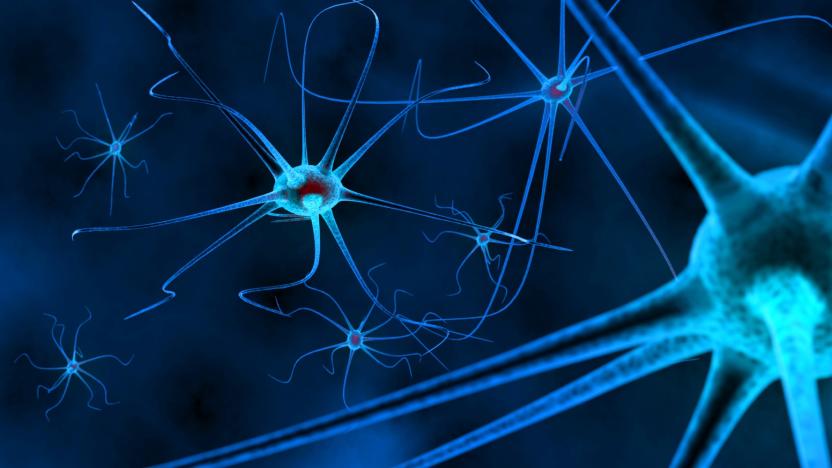
Robots are now better at targeting individual neurons than people are
The brain is a delicate thing, and scientists keep looking for high tech ways to make it easier and safer to to learn more about it. In the area of brain surgery, there have been smart scalpels that know the difference between tumors and healthy tissue, sensor-embedded plastic wrap to help doctors know just where to operate and even VR headsets to help surgeons monitor patients while they're in the OR. Studying the brain leads to even better outcomes, too, and engineers at MIT have just published a paper about using robots to target individual neurons from inside a living brain in order to record their electrical signals.

Flat microscope for the brain could help restore lost eyesight
You'd probably prefer that doctors restore lost sight or hearing by directly repairing your eyes and ears, but Rice University is one step closer to the next best thing: transmitting info directly to your brain. It's developing a flat microscope (the creatively titled FlatScope) that sits on your brain to both monitor and trigger neurons modified to be fluorescent when active. It should not only capture much more detail than existing brain probes (the team is hoping to see "a million" neurons), but reach levels deep enough that it should shed light on how the mind processes sensory input. And that, in turn, opens the door to controlling sensory input.

Experimental drug could restore memories after brain injury
An experimental drug could have major implications for patients suffering from memory disabilities caused by traumatic brain injury (TBI). In tests, the drug known as ISRIB completely restored the ability to learn and remember in brain-injured mice -- even on those that were treated up to a month after injury. The findings are contrary to most research on brain trauma, which claims treatments must be carried out urgently to preserve normal function.

The Air Force and IBM are building an AI supercomputer
Supercomputers today are capable of performing incredible feats, from accurately predicting the weather to uncovering insights into climate change, but they still by and large rely on brute processor power to accomplish their tasks. That's where this new partnership between the US Air Force and IBM comes in. They're teaming up to build the world's first supercomputer that behaves like a natural brain.

Implant-free stimulation could treat brain conditions
Scientists know that stimulating the deeper regions of your brain can treat Parkinson's and other conditions. But there's a problem: they usually need to open your skull to place implants, which is both time-consuming and risky. Researchers may have a better way, though: they've invented a deep brain stimulation technique that only requires electrodes on your scalp. The trick is to create two high-frequency electrical currents that don't do anything by themselves, but interact with each other deep inside your brain. If you want to target different parts of the brain, you just change the frequencies and placement of the electrodes.
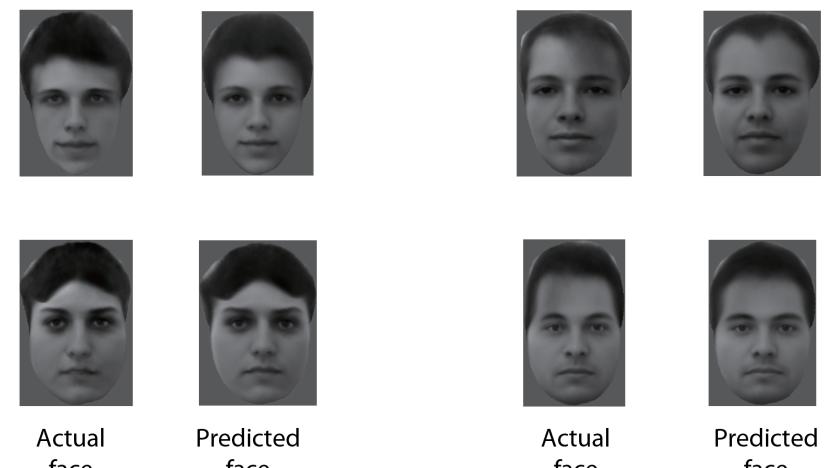
Scientists now know how your brain differentiates faces
Researchers at Caltech have taken a huge step in figuring out how the brain processes faces. In a study published this week in Cell, the team found that the brain only needs around 200 neurons to differentiate faces from each other.






